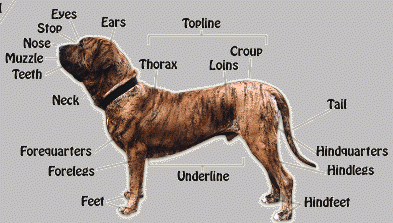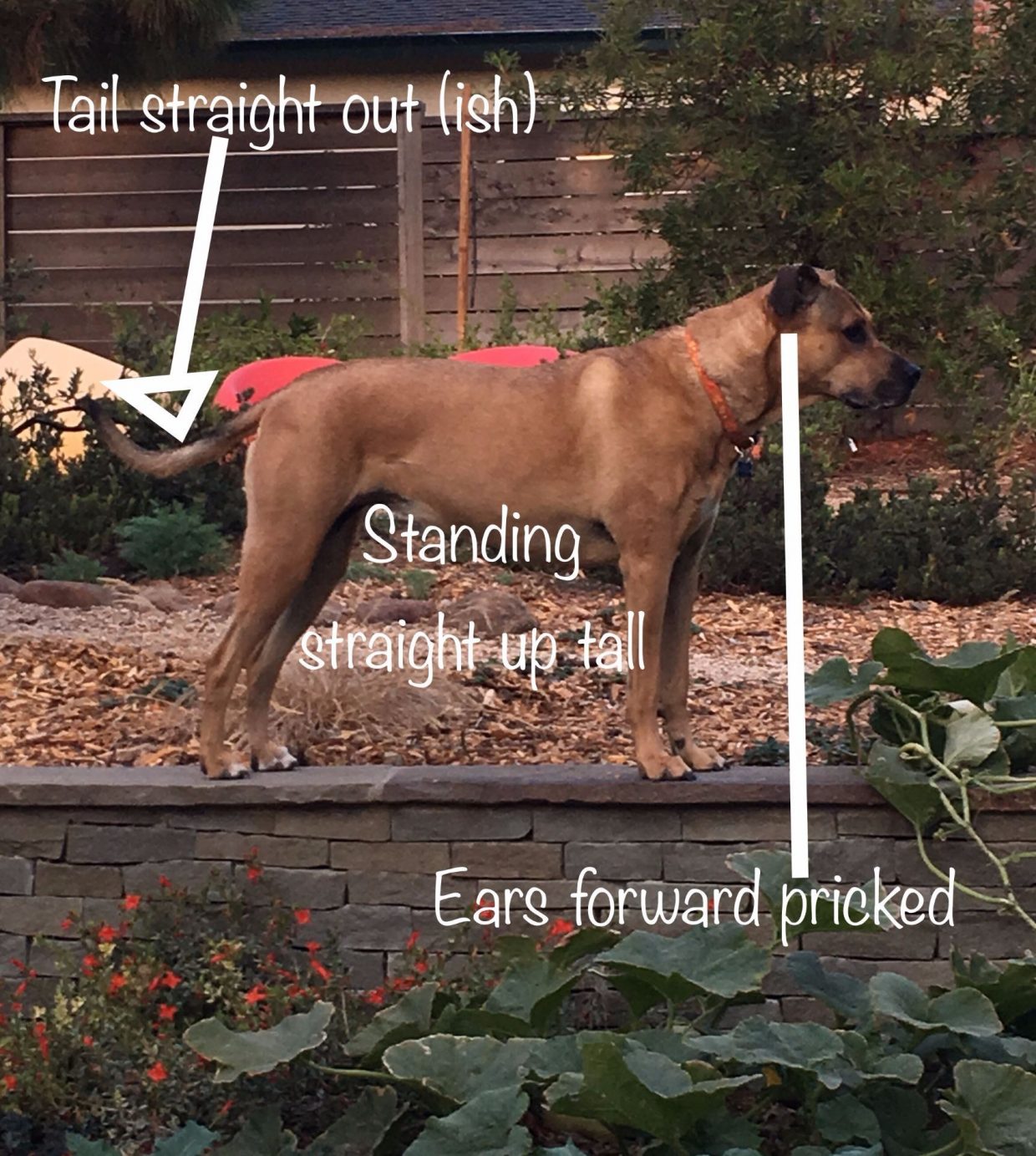What better way is there to begin communicating than understanding a common language? When it comes to dogs, their body postures are there expressions. So, I began researching for this new series by reading two articles and a chapter of a book that focused on learning to “speak dog” by understanding their body language.

This is the best diagram of a dog that I could find!
Experts advise that dog lovers should look at the big picture when trying to understand their dog. They should read the signs and signals from their dog’s eyes, ears, mouth, tail, and hackles before coming to a conclusion about what their dog is trying to say.

This picture is of Daphne sleeping, then noticing me!
After reading a lot about dog body language, I learned about several ways that dogs show emotion just by moving their body the slightest bit! For example, it confirmed my hypothesis that lip-licking and yawning can be a sign of stress or anxiety.
It’s important to know what your dog is saying in many situations. Whether laying down on the couch or barking at another dog, learning the language is imperative! I made a list to help identify certain states of being in dogs.
- Calm/relaxed:
-
- Relaxed soft stance
- Ears relaxed
- Tail down and relaxed
- Head high
- Casual gase soft
- Alert:
- Tail straight out (not firm)
- Ears forward pricked (may move slightly)
- Standing straight up tall
- Eyes wide (ish)
- Dominate Aggressive:
-
- Hackles raised
- Nose wrinkles
- Snarl
- Body slightly forward
- Fearful:
- Body lowered
- Tail tucked
- Ears Back
- Brief eye contact
- Forehead smooth
- Anxious/stressed:
- Tail down
- Stiff tail wag high up
- Body lowered
- Ears back
- Panting
- Lip licking
- Yawn (tired or anxious)
—————————————————
SOURCES:
- Don’t Whisper Listen – By Pat Miller
- How to Read Your Dog’s Body Language – By Stanley Coren

natalie dente October 16, 2017
Hi Anna, What an interesting article. With all the dogs that live around here I can now have an insight into what they are saying. I hope their owners have a clue. Keep up they good work. love Grandma N
donna October 17, 2017
Hi Anna,
This is good information for anyone who comes in contact with dogs. I think the “tail wag” is often misunderstood. I’m glad you’ve pointed out that the tail can signal many things! Looking forward to learning more.
Debbie October 27, 2017
Hi Anna,
Great information! Most people don’t understand how dogs communicate (and horses too for that matter). In upcoming posts can you please include tips on how humans should respond to a dog’s cues? Thanks!!
xo Aunt D
Isabella November 5, 2017
This is really cool. I want to see if I can notice these behaviors on Tiger and Wyatt. Are these the same for every dog or is each dog different like humans?
annac9 November 18, 2017 — Post Author
Yes! They are slightly different for each dog, but in general they’re the same basic cues! 🙂
Kurt November 8, 2017
I think this is really quite informative; I had never really thought about postures and behavior beyond immediate reaction to what she (or any other dog) is doing in a given moment. This will make me think (and we all know how hard that is for me.)